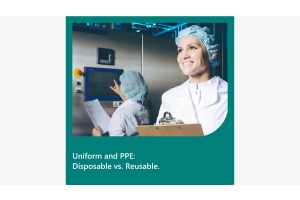Where do I start with colour coding my PPE?

Where do I start with colour coding?
What are the non-negotiable contamination risks you need to prevent? It’s these areas that are ideal to begin managing using colour. There’s no right or wrong way to do this, and colour coding is fully customisable to your needs.
Outlined below are some of the common colour coding practices used within the industry. If you are interested in how and why it works, click through to this blog where we outline some tips on implementing it.
Allergen management:
Allergen contamination is a universal concern within the food processing industry, as the consequence of this occurring is costly and damaging to reputation. Colour is one of the most effective methods to manage handling of allergens. Ingredients that could cause food allergic reactions to your consumers, such as nuts, cannot contact any other ingredients. A specific colour PPE is designated for this ingredient, and that colour of PPE is not permitted to touch any other ingredient. Warm colours – orange, red, yellow – are commonly used for this purpose, as they are associated with a warning.
Ingredient and process segregation:
The ingredient category or production stage could be another area in which you implement colour-coded PPE. Common practices include differentiating handling of wet and dry ingredients, raw and processed products, or packaging. However, only the most high-risk stage or ingredient often has a colour allocated, as multiple colours can be confusing for your staff to work with.
Zone and Shift Control
Zoning and shifts are both strong segregation methods commonly used in the food industry to ensure safe processing. For further security, coloured PPE can be utilised. Colour code your hygienic zones to facilitate quick and efficient monitoring of staff adherence to contamination protocols. Additionally, it enhances foreign object traceability, as you are able to track via the colours.
Role Differentiation:
Identifying key personnel, for example, First Aid, fire wardens, or shift managers, allows your team to quickly identify who to report to in an emergency. Other common role differentiation examples include management, office staff, and visitors. Some food processors designate a colour to new employees until they are familiar with protocols. These methods increase awareness across your team, allowing your staff to work together.
Compliance monitoring:
This is a variation of zone and allergen management as well as role differentiation. Using coloured PPE allows you to visually identify any potential issues of personnel making contact with the incorrect ingredients, or who are not in their designated area. This is particularly beneficial if you have language barriers to mitigate.
There are many variations in how colour can be used; potentially, even multiple methods would be feasible for your facility.
Colouring your PPE protects against cross-contamination, a critical concern of the industry. Furthermore, It is one of the cheapest segregation methods to implement, as it’s available at the same price and quality as standard PPE, reducing production trials, and QA approvals.
Coloured PPE is an ideal, customisable solution for you. So, which method would benefit you the most?






